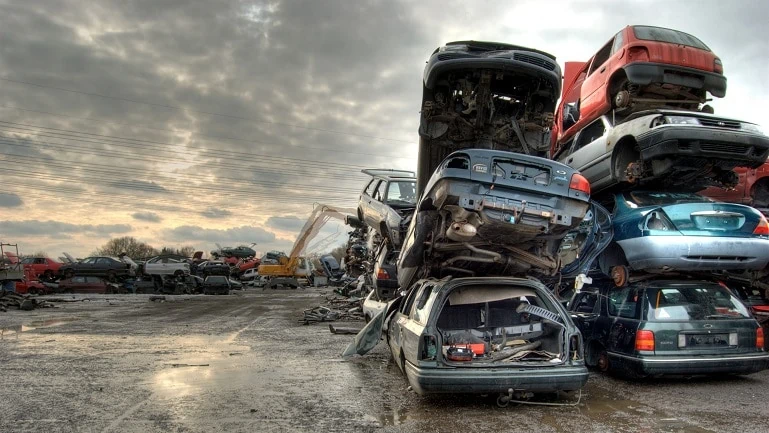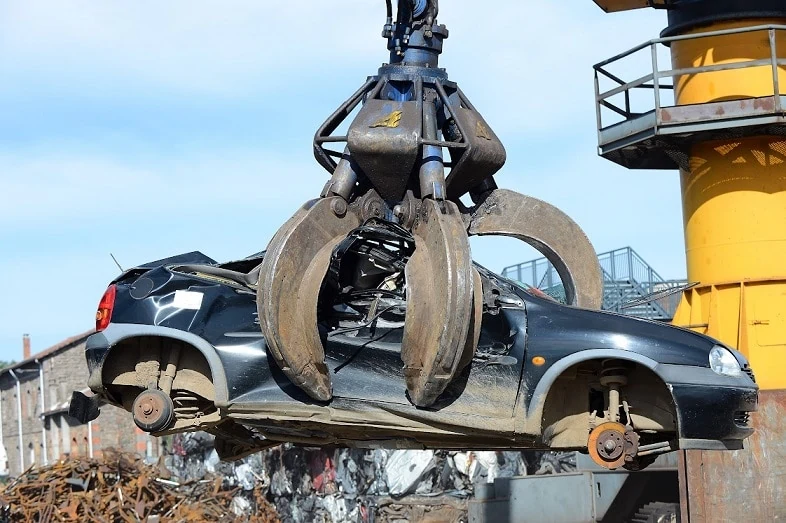Currently, car recycling in New Zealand is lauded by its population and is far better managed than in its neighbor, Australia. However, in spite of the country having very developed recycling facilities (compared to other developed countries like the US and the UK), particularly for car parts, it’s experiencing a recent rise of abandoned end-of-life vehicles (ELV).
In Auckland alone, the number of abandoned ELVs rose by 175% from 2013 to 2018. To those unaware, ELVs are vehicles that have reached and exceeded their intended lifespan. Owners typically keep them in their properties, while some just leave them somewhere to degrade. They can be categorised into two: natural and premature. If cars get totalled or become unusable because of an accident, they become premature ELVs; otherwise, they’re natural ELVs.
In most parts of the world, governments mandate the immediate recycling of ELVs and abandoned cars, as they can be unsightly and cause problems to people and the environment. In New Zealand, if an ELV car is abandoned, it’s subject to the Local Government Act 1974. This dictates how abandoned vehicles are removed from roads, which may often lead the council sending it to a car wrecker for disposal.
In New Zealand, for-profit companies – car wreckers primarily – do the recycling of ELVs to acquire spare parts and valuable materials. If you’re interested in knowing how they perform ELV recycling, continue reading.
Sourcing the cars
End-of-life vehicles don’t magically appear on a car wrecker’s property. Car wreckers from sites like https://www.atlasauto.co.nz/car-wreckers/waikato/hamilton/, acquire them by buying them from owners. They primarily target vehicles that are in a state of disrepair, old, unwanted and de-registered.
These car wreckers will practically accept any vehicle. They typically get SUVs, buses, RVs, trucks, vans and more. After a vehicle is sold, the wreckers will do the favour of towing the car from the seller’s property.
In some cases, car wreckers may stumble upon vehicles that are still relatively a few years away from being retired and are still roadworthy. Typically, they’ll appraise those cars and renegotiate with sellers. Depending on the condition and model of the vehicle, wreckers may pay up to NZD$12,000 upfront for it.
Starting the recycling process
Car wreckers can recycle almost 86% of a vehicle, with metal comprising a massive chunk of its recoverable materials. Next to metal is rubber, which is a highly utilised recovered material. Nowadays, 10% of new tires are made using recycled rubber.
Recycling starts with draining and removing all fluids inside a vehicle. Then wreckers would proceed to take out small but potentially valuable and reusable parts like catalytic converters, batteries and airbags. Lastly, large parts that can be refurbished as spare are taken from the vehicle.
Refurbishing and taking care of spare parts
An ELV can contain many reusable parts, and these parts can be sold as spare after repairs and refurbishing. Some of the highly valued parts that a car wrecker will often salvage from ELVs are engines, transmissions, lights and cooling and electrical components.
Shredding the car body and other unusable parts
After taking reusable components from a junk car, the car body remains. Car bodies often contain most of the recoverable material in a car, and recycling it significantly helps with material sustainability.
The ELV car bodies are often destroyed using slow-speed metal shredders. The shredded material pile then goes through a metal screen to separate small materials (around 150mm in diameter) and huge chunks. The filtering screen vibrates to allow small bits and pieces to go through.
Once the pile has no remaining small materials, the remaining bits and pieces are then sent back to the shredder. They’ll go back to the filter again, and the process repeats until everything gets smaller.
Separating metals and unusable materials
A few steps away from the last part of the car recycling process, all the reduced materials will then go through a magnet drum. This drum magnetises metal parts to separate ferrous and non-ferrous materials. The magnetised pieces are then sent to a high-speed shredder to make them smaller (around 50mm in diameter).
Once processed through the high-speed shredder, the recovered materials will go through an eddy current machine. This machine uses currents to identify and sort different metals, like copper, steel, aluminium and slags. Sometimes, the materials are placed on a conveyor belt to allow employees to sort the metals apart manually.
Conclusion
Once an ELV is wholly processed, car wreckers will sell all recovered materials and spare parts, which concludes ELV recycling. As you may have surmised, New Zealand can stand to gain a lot from this process, especially when disposing of abandoned vehicles. Recycling also provides people with a way to retire an old car, access more spare parts, and help the environment.




